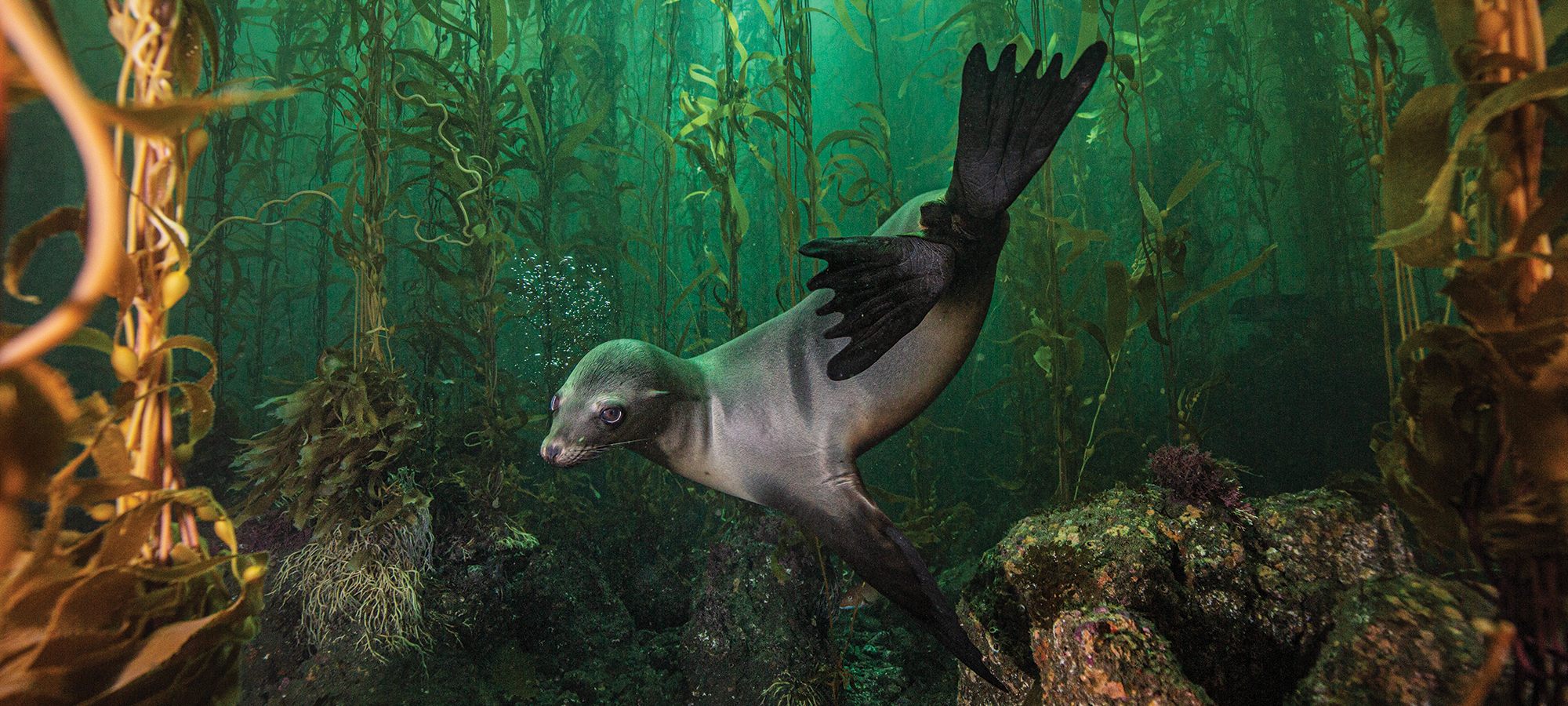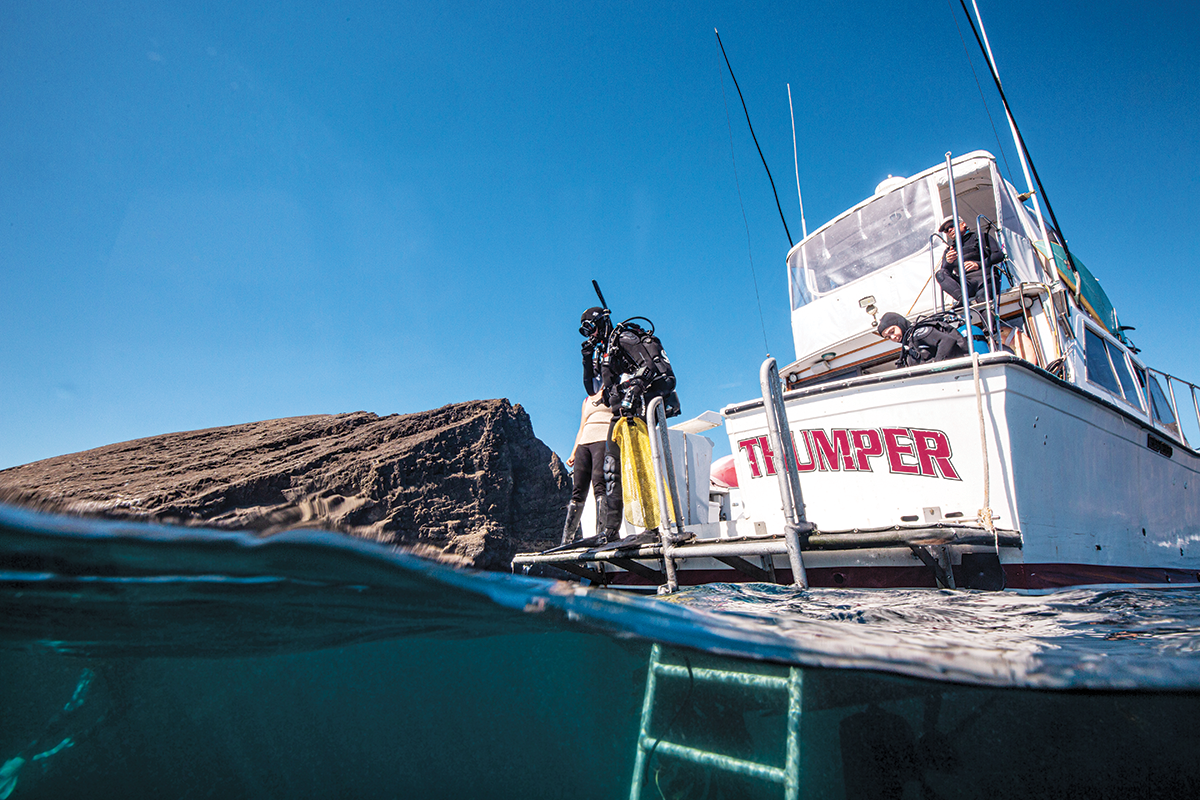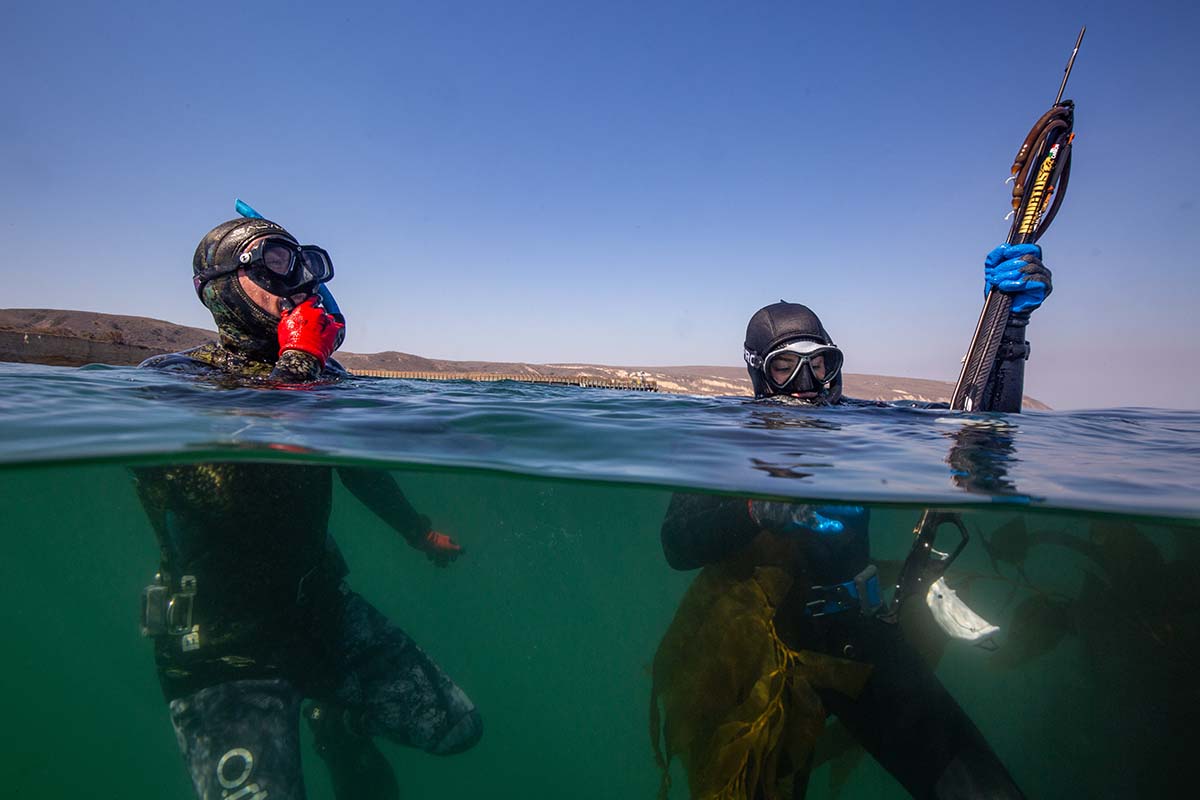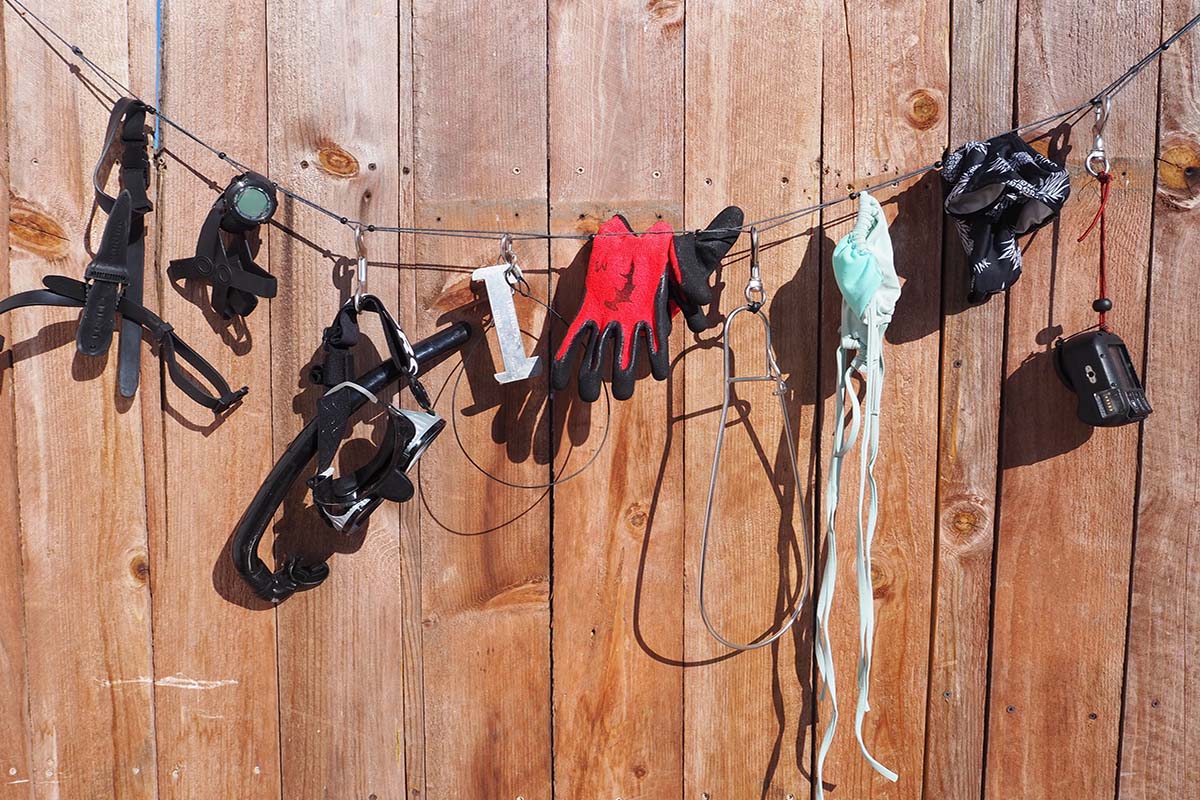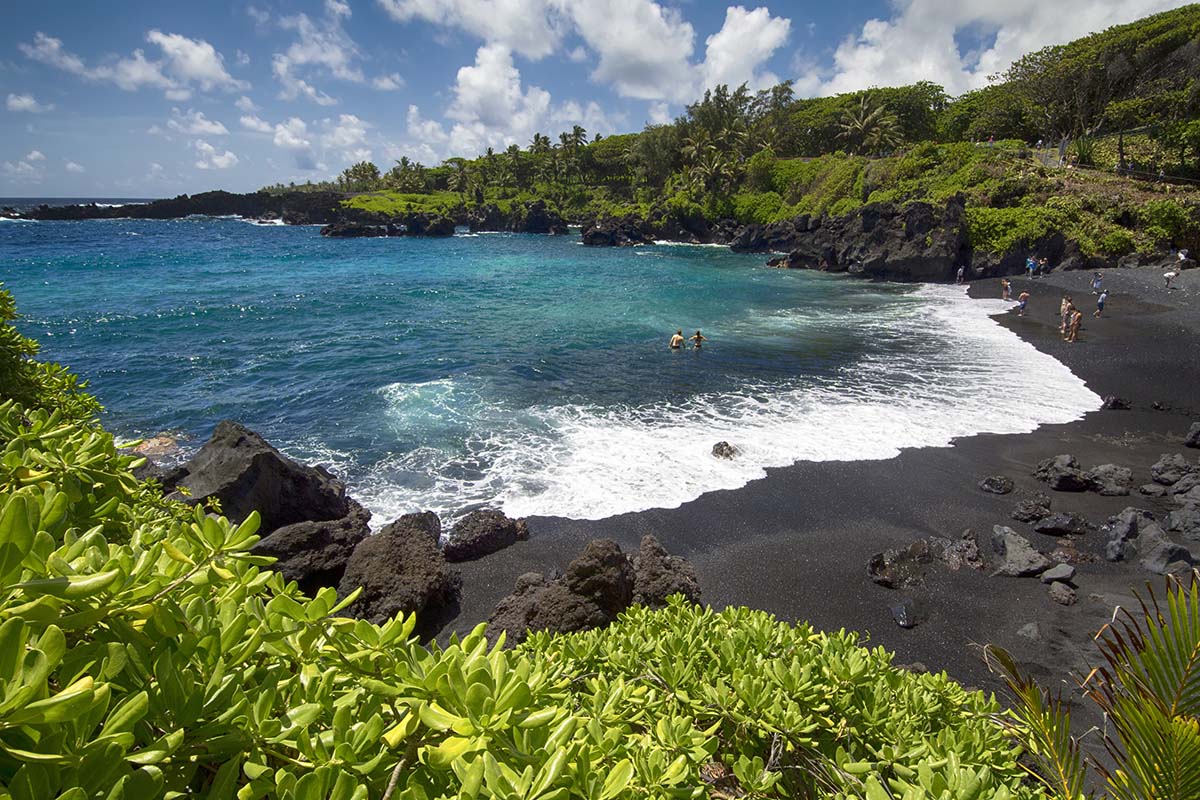A Rugged Dive Adventure Through Channel Islands National Park
Our tent flutters in a windswept valley stranded at the far edge of the country. More than a mile away, freediving gear awaits us in a fox box on the ferry pier. It’s not locked, but where would somebody take the gear if they stole it? The California mainland is almost 50 miles away, and nobody is going to load their backpack with lead and neoprene. We’re here to dive and even we didn’t want to haul all 240 pounds of gear, 50 pounds of dive weights, 2 gallons of water, seven cans of beer and two flasks of whiskey to Santa Rosa Island’s frontcountry campsite.
This island and its sisters have known many lives. Some peek through the soil. The oldest human remains in North America were found here, where the Chumash Indians made their home for a good 10,000 years. Their millennia-old shell middens are visible along trails that hikers cannot leave for threat of triggering undetonated artillery left over from midcentury U.S. Navy bombing exercises. Decaying fences left by ranchers carve the landscape of one island; sand dunes hued by overgrazing sheep blow on another, where four out-of-place palm trees, rumored to be left over from an Old Hollywood production, crown the beach. Other pasts are less visible—an island’s time as hunting grounds for wealthy travelers shooting imported elk, or as a safe harbor for the shipwrecked whose boats now decay below the waves. Kelp forests full of urchins and scallops, mussels and rockfish, elephant and harbor seals, and the occasional shark bustle around these wrecks.
So begins our 10-day journey to dive all five islands of Channel Islands National Park: Santa Rosa, San Miguel, Santa Barbara, Anacapa and Santa Cruz. We’re spending five days hiking, camping and freediving along the two islands farthest from shore, then a few days on the mainland in between two day charters to scuba dive the remaining islands.
It takes a determined diver to make it to the park. There is one ferry, and trips are not offered daily. A few islands have water; none have reliable cell service. You have to plan ahead, and move nimbly when those plans go awry.
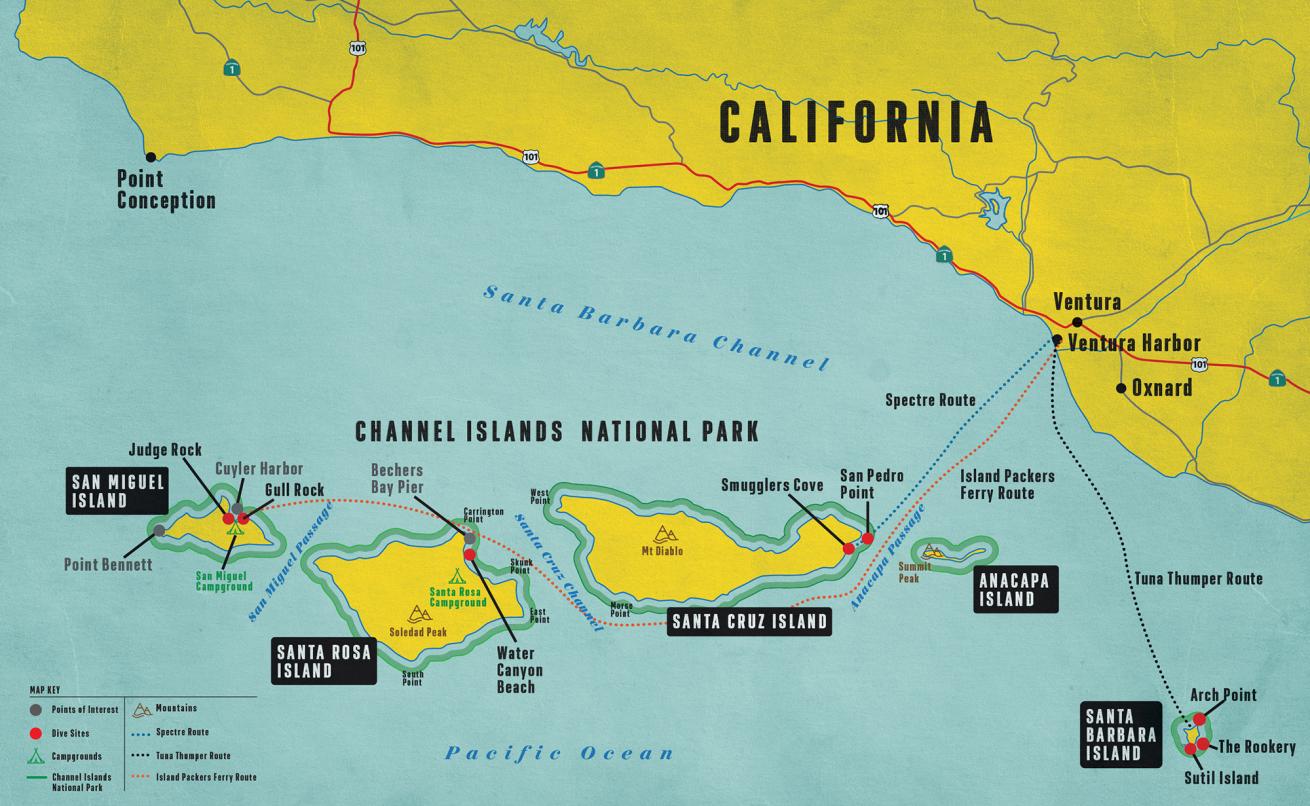
MAP: Shutterstock.com/Rainer Lesniewski; MAP ILLUSTRATION: Monica MedinaThe authors' Channel Islands itinerary pings between the mainland and the national park.
The four of us—Scuba Diving editors Alexandra Gillespie and Ariella Simke; scientific diver and underwater photographer Michael Langhans; and Monterey dive instructor Brian DeRubes— have spent months making the arrangements required to pull off the trip, wrangling days out of the office and inventing ways to clean gear in the backcountry. We selected mid-October for the trip, when the Pacific is about as warm as it will get but the scorching summer air temps have passed.
A week and a half before we leave, a damaged oil pipeline leaks an estimated 25,000 gallons into the channel. We anxiously watch the news as the slick heads south, away from the park. Precious waters and shores are painted black, but our awaiting islands remain blue.
Santa Rosa
OCTOBER 14
Thursday Morning
I move gingerly down the ladder, trying to keep the metal rungs from digging into my feet. Ariella stands below me, holding the four fins I’d just strained my shoulder passing down from the pier to the beach. Regrouped below, we prep our gear, on loan from Monterey-based freediving group Fin and Forage, under the hot sun. It’s time for my first freediving session.
My ungloved fingers yelp as I walk into the 59-degree water. No matter. I spent enough childhood hours in Michigan lakes to know they’ll adjust or go numb soon enough. Hovering in the kelp patch right off the dock, Ariella tells me to stick my face in the water, breathing slowly, relaxing everything. My nerves twinge. I can only see a few feet. The waters are thoroughly slopped from the overnight winds that threatened to pitch our camp into the sea. I lose sight of her quickly as she takes her first dip to the bottom of our 12-foot shallows.
Twelve feet. That’s just like the deep end of the pool you played in as a kid, I remind myself. No big deal. Breathe in, breathe out. Breathe in... breathe out... breathe in... I fold my body in half, head replacing fins, fins meeting sky. The unfamiliar weight belt tugs me down, and I too kick into the fog. Any anxiety dissipates the instant I’m fully underwater. I’m in familiar territory now.
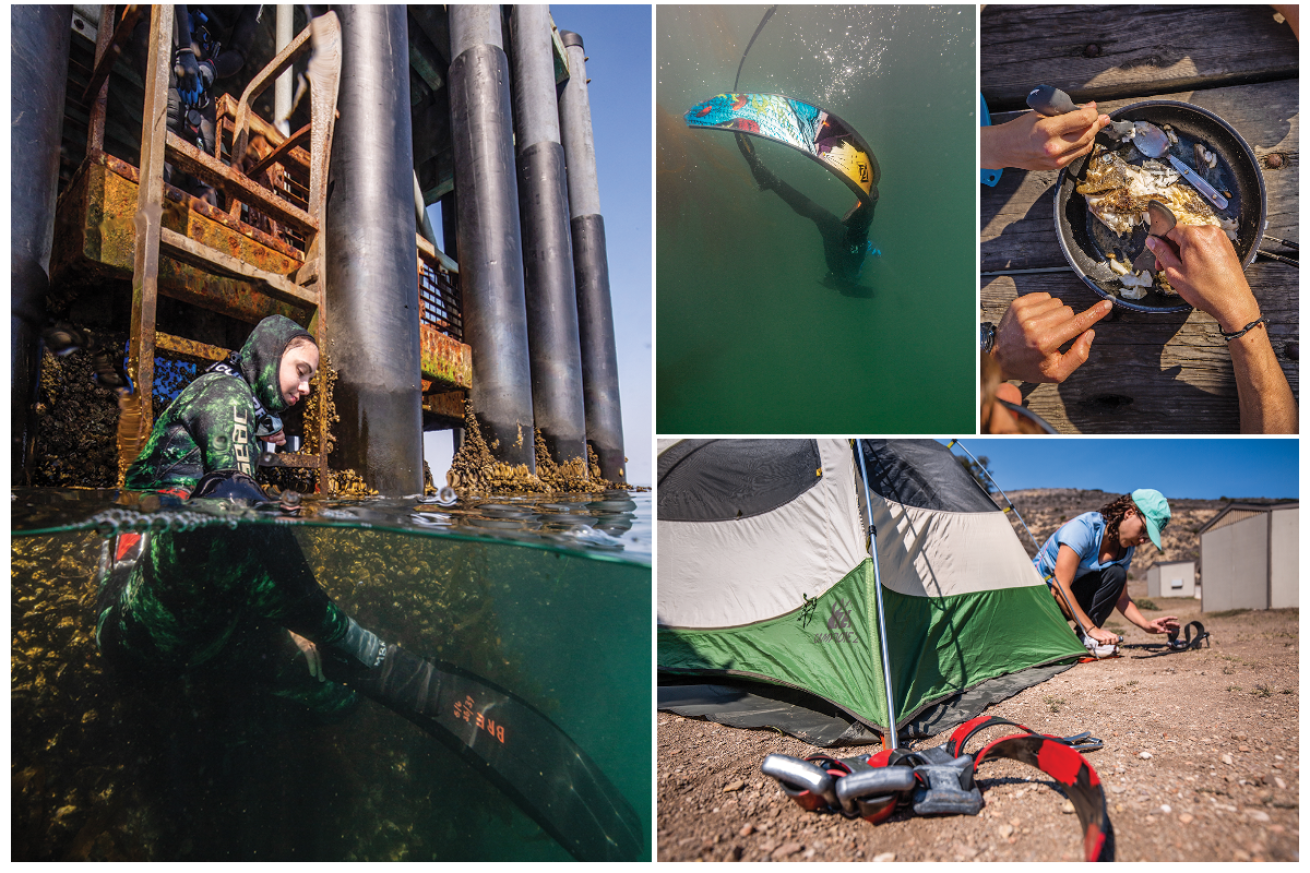
Michael LanghansClockwise from left: divers exit on Bechers Bay Pier; Ariella kicks down;a fresh-caught rockfish lunch; Alexandra pounds in tent stakes with a dive weight.
Thursday Afternoon
Those first pikes kick off three and a half hours of bobbing up and down like cold-water turtles, foraging for anything edible. We strike out on lobsters despite the field of promising trap buoys above the kelp. Brian spears a few stray fish for a late lunch, but purple urchins comfortably outnumber everything else. Ariella sinks down to pry one from the rocks below. Time for a snack.
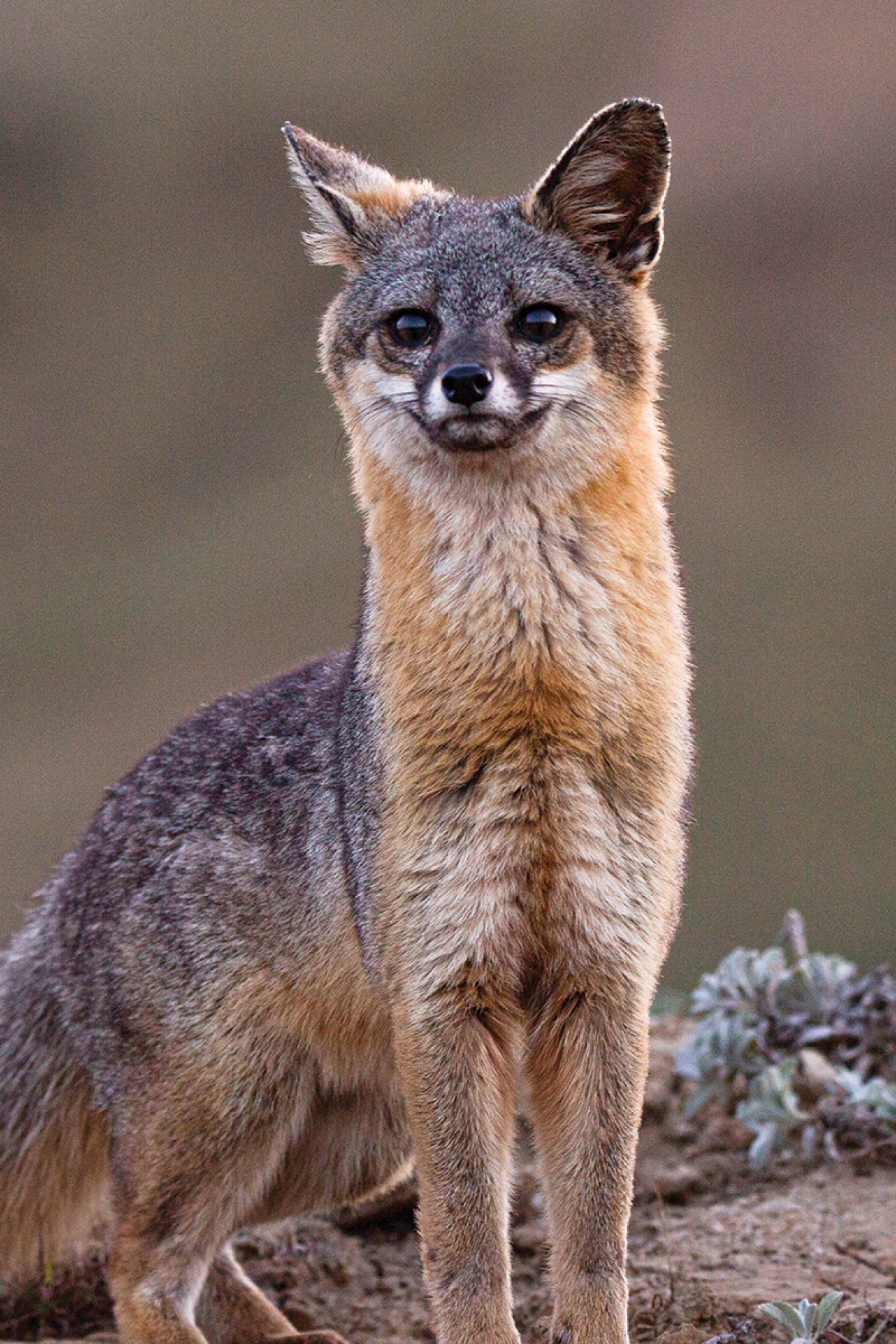
Michael LanghansAn island fox pops out of the desert brush.
Poking her knife into its spined crest, she takes care to avoid slicing her fingers. The shell cracks, shards crumbling as she dollops the buttery yellow innards into our salty hands. I let the seawater on my palm mingle with the world’s freshest uni, yet when I drop it into my mouth it’s almost too sweet.
Thursday Night
A fox! There’s a fox wandering around our campsite. Each island has its own subspecies of fox—some of the 145 endemics that earned these islands the nickname “the Galapagos of California”— and I have about 4 pounds of found-nowhere-else-fur staring straight at me.
Everyone else has migrated to our neighbor’s campsite to play games, leaving the food storage box open since I’ve lagged behind to take notes in the tent. Our seemingly unattended food draws him in like a magnet. He sniffs the perimeter of our camp, hops on the picnic table to inspect Michael’s underwater camera, and decides I am benign before crawling up onto a pile of rocks clustered near the fox box, nose lasered in on the food. I begin clapping. Despite being about 34 times his size, I’m apparently not a convincing threat. He trots into the bushes only to return minutes later. A highly menacing shout of “Hey, fox!” finally sends him skittering off for friendlier pastures. — Alexandra Gillespie
San Miguel
October 15
Friday Morning
My stomach takes a flying leap toward my throat as our ferry makes yet another dip into the trough of a passing wave. Two days earlier, en route to Santa Rosa, an unlucky crew member was tasked with hosing down someone else’s puke before it dried on the side of the boat. I swallow hard, determined not to be next. Clammy fingers navigate the inside of my jacket pocket for two brick-red Bonine pills—the only hope I have for settling my quaking insides.
As soon as the rugged outline of San Miguel slides into view my nausea subsides, excitement bubbling up in its place. Six hours ago I watched a pastel-hued sunrise from our wind-battered tent on Santa Rosa. Now, much higher in the sky, the sun penetrates turquoise waves sloshing around the hull as we sit 100 yards from the hook-shaped beach of Cuyler Harbor. Time for our much-anticipated wet entry.
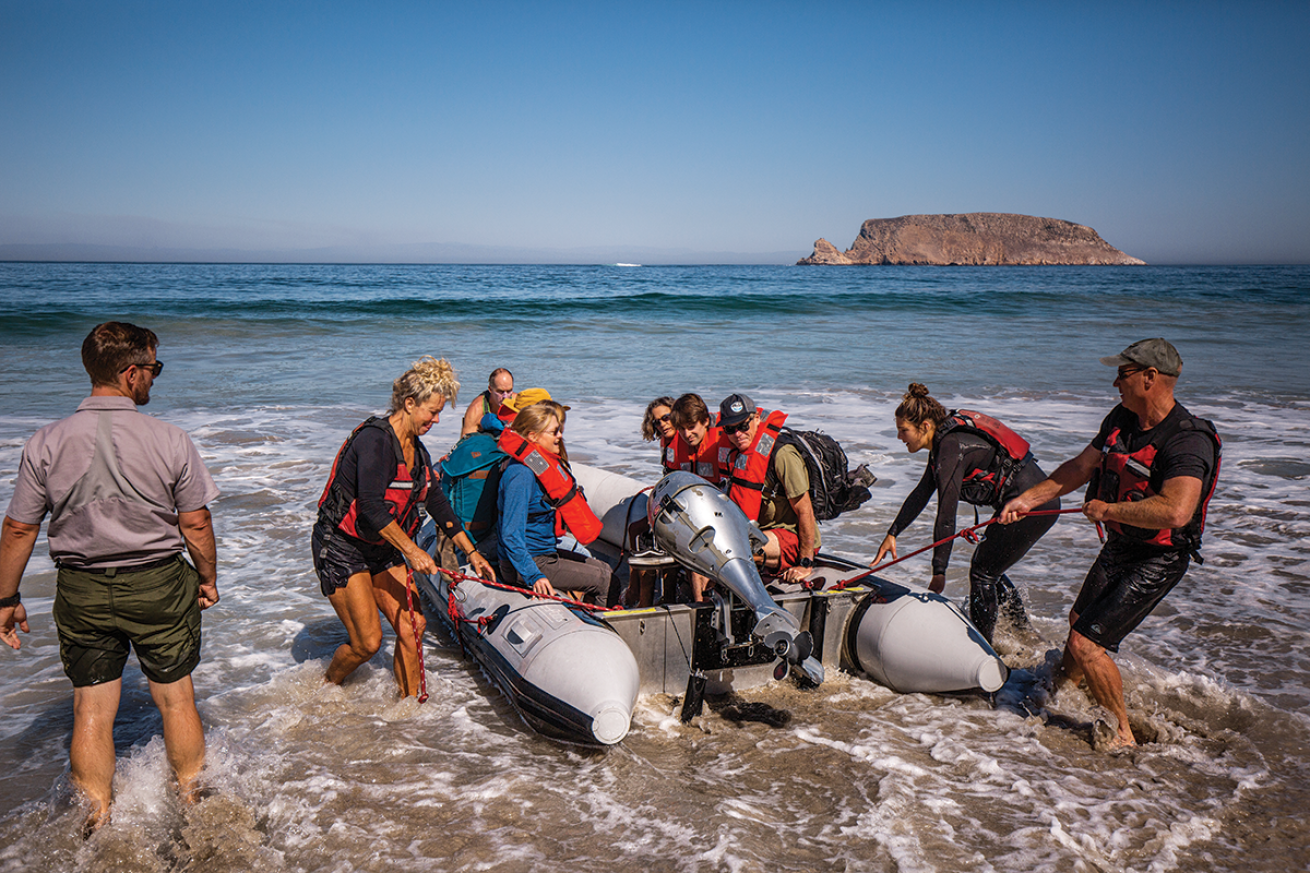
Michael LanghansThe wet landing with Island Packers’ skiff.
One small skiff had hitchhiked its way to the island on the back of our ferry. Now it is put to work, shuttling passengers clad in bright-orange life vests to dry land. We pile in six-deep, our daypacks dumped into trash bags. “It’s my first time doing this,” says our grinning skiff captain as sets of 3-foot waves barrel toward shore—relatively benign conditions for this island, where roaring winds and surfable waves are the norm. We’re on one of the last ferries out for the season. They’ll pick up again when the swell flattens next summer.
Our gear catches the next ride, a massive pile of backpacks, coolers and water jugs piled precariously on the deck. Unlike Santa Rosa, San Miguel has no fresh water for drinking. Anxious gasps erupt from the small crowd on shore each time an oncoming wave threatens to cast our belongings into the sea. Nearly two hours and a dozen trips later, the ferry disappears onto the horizon, leaving us for the next two nights on this mysterious island.
Staring up at the steep sandy trail that leads to the campsite, we opt to put off the inevitable climb, instead donning our soggy wetsuits and setting off to catch dinner. Our target: the large, protruding Judge Rock to the east, where we had been clued in to the presence of lobsters—and sharks. Each year, approximately 125,000 pinnipeds come to the island to breed, drawing in great whites for an easy meal.
I try not to think about that as I kick over to Judge Rock, the seafloor disappearing beneath me. The jagged, hulking basaltic rocks surrounded by sand provide impressive structure and attractive real estate for colorful anemones, juicy scallops, abalone and rockfish. Nearly four hours later we have what we came for. The guys scale and gut the fish on the beach, placing the fillets inside Brian’s seawater-filled dry bag. Finally, we will our tired muscles to tackle the hill.
Friday Evening
Back at camp, Alexandra gets to work prying open the scallops for dinner. The sweet, firm meat is mouthwatering. Meals always taste better when you catch them yourself. Bellies full of fish, backpacking meals and whiskey, we settle in for a rowdy evening playing cards before sliding into sleeping bags laid out under a glittering tapestry of stars.
On Sunday we’ll head back to Ventura for a couple of layover days before our scuba odyssey starts. But first, another freediving adventure tomorrow. —Ariella Simke
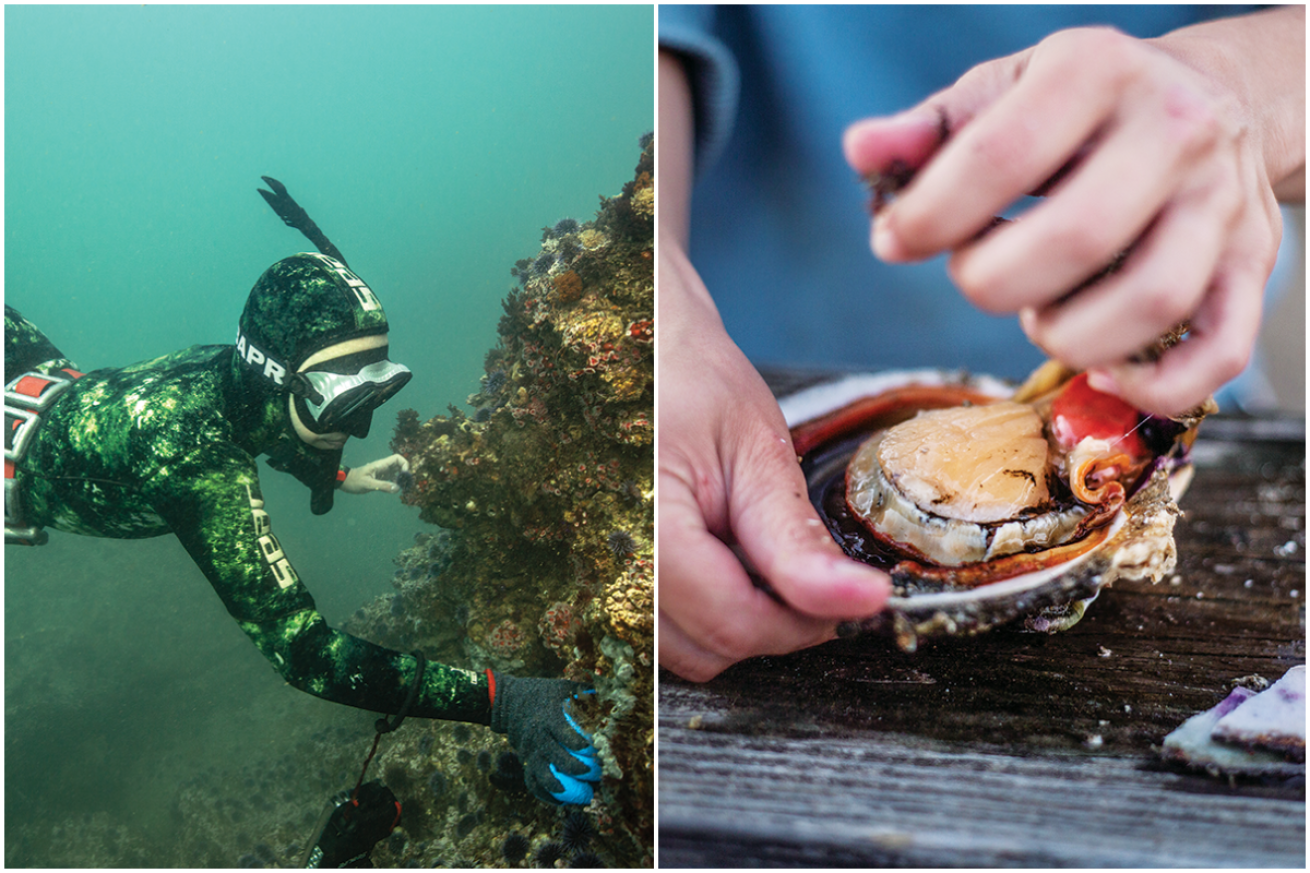
Michael LanghansFrom left: Alexandra freedives for scallops before prying one open for dinner.
Santa Barbara
Getting to Santa Barbara Island demands dedication. The southernmost of the national park’s five islands sits roughly 40 miles from the main cluster. Ferry service via Island Packers has been suspended for two years due to pier damage, squashing our dreams of including it in the backpacking leg of the trip, and we could not find a scheduled group charter. Ultimately, Ariella connects with a freediving charter out of Ventura Harbor, Tuna Thumper, that’s willing to deal with our dive tanks. It’s scuba time—but not before offshore winds and choppy seas extend our mainland layover another day. On Tuesday, we catch a break: The winds drop precipitously. Game on.
October 29
Tuesday Morning
Motoring out of the harbor at sunrise, I’m treated to a panoramic view of the hilly coast from a makeshift bunk in the salon, where I promptly fall asleep. I’m exhausted from sleeping on the ground and then a couch, from our 16-mile hike to San Miguel's Point Bennett, from getting up early, from staying up too late watching the new National Geographic cave-diving documentary.
I wake up briefly en route to learn I just missed a whale cresting in front of the boat. As I drift off again, I’m irritated with myself. I’ve never seen a whale, never even had the chance. I cross my fingers and hope our dive encounters make up for this miss.
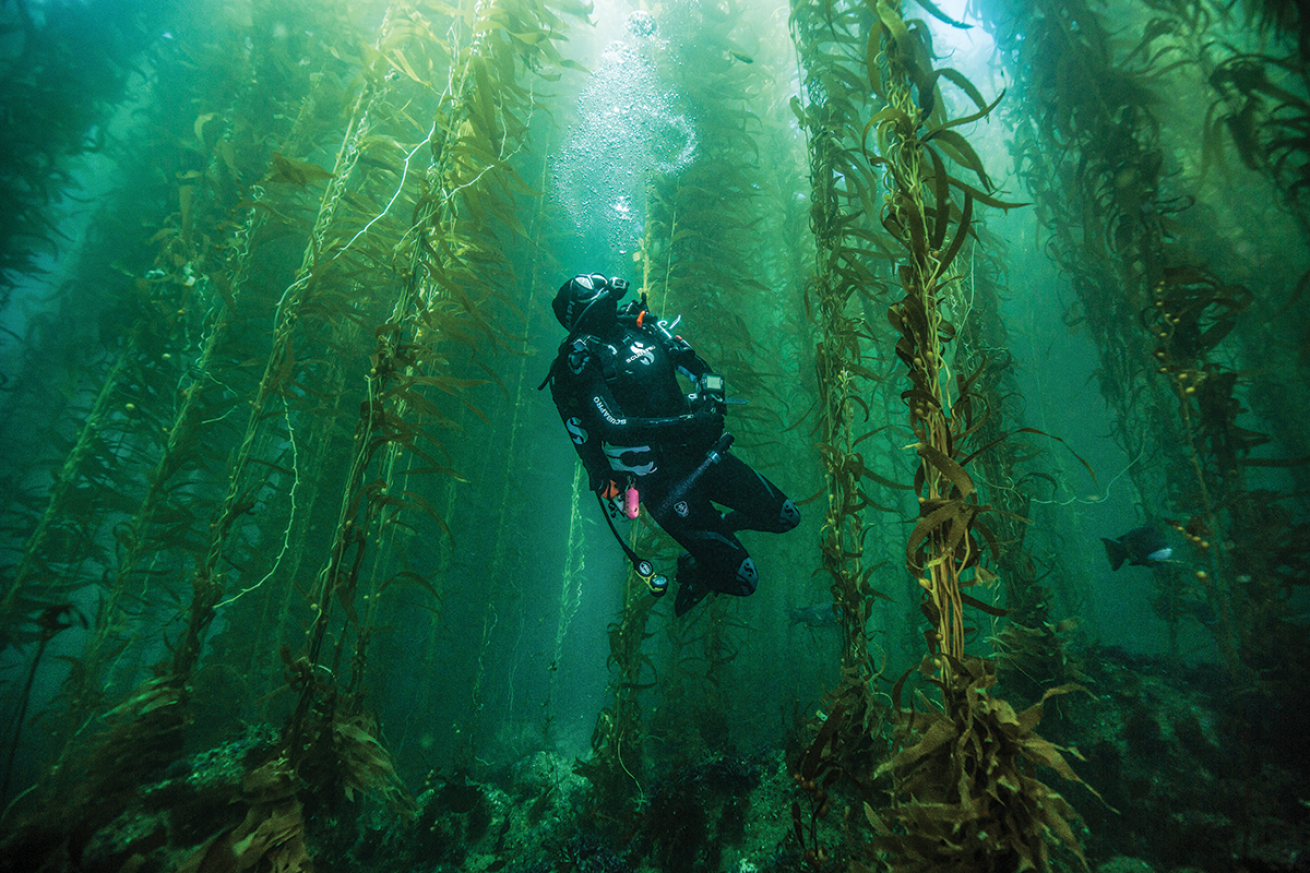
Michael LanghansAriella enjoys the filtered light of a Santa Barbara kelp forest.
Even before we drop anchor at our first site, the Rookery, that seems likely. Several sea lions jet toward the boat above and below the water as the rest of the colony chatters on the rocks nearby.
Underwater, upward of a dozen sea lions soar around us for the entirety of our 50-minute dive, easily navigating the kelp thicket snagging my fins. In a clearing ahead, Brian is taking turns twirling head-to-head with one. Another zooms past on my right, jerking upward and ascending the towering kelp like Superman roaring up a skyscraper. A trio appears over my right shoulder on the penthouse level. Now the whole Justice League is here, I think.
Near the end of the dive, I find a juvenile sea lion perched alone by a sloping rock. He stares at me with naked curiosity. Then he opens his mouth to let a few bubbles billow out. He observes me, serious, watching the stream of bubbles coming from my regulator. Then he lets out another burst of bubbles, and another. He’s mimicking me, I realize! I’m touched. He doesn’t know why we’re blowing bubbles, but wants to figure it out. We exchange exhales until another sea lion darts in. My friend bites at him playfully before they scoot off, whirling and nipping.
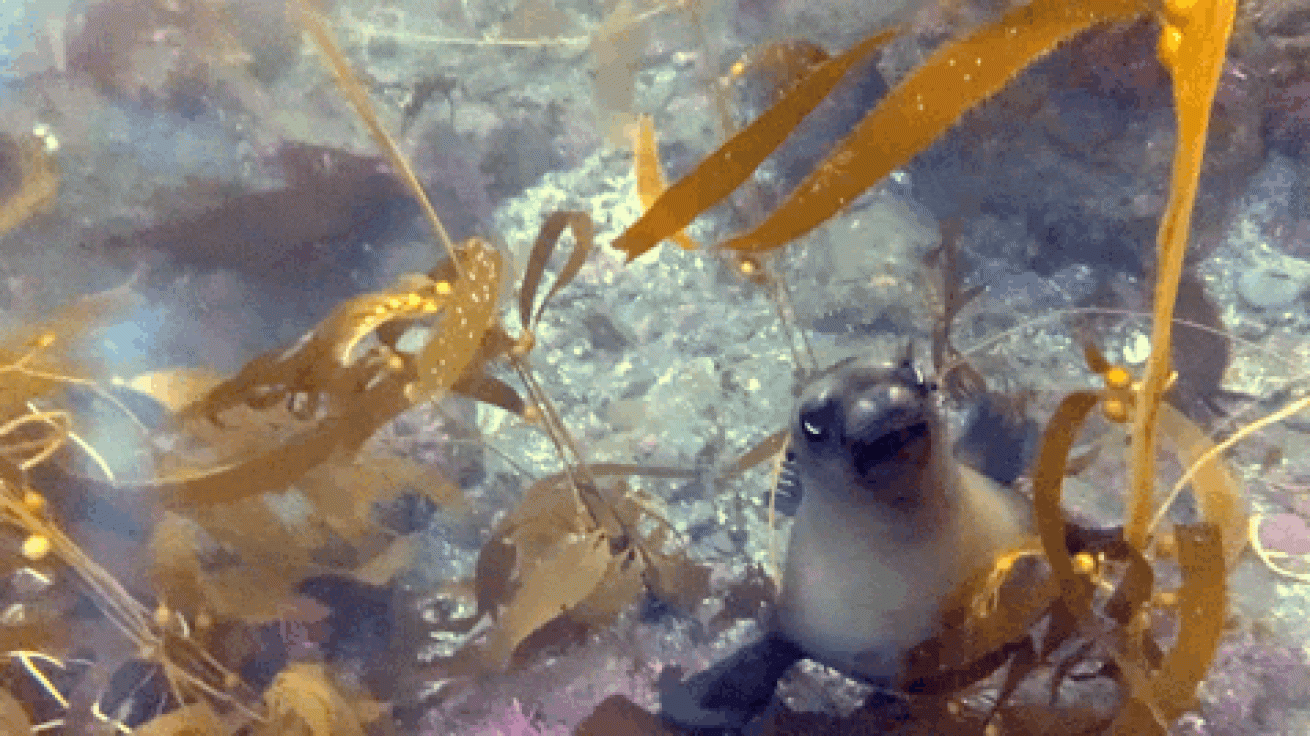
Alexandra GillespieA sea lion blows bubbles at the Rookery at Santa Barbara Island.
Tuesday Evening
Two more dives in the warm (for California) 62-degree water, and we’re headed home. I’m back in a bunk—this time to ward off seasickness—when I feel the boat slow. I scramble to the bow, nausea be damned. I will see whatever we’ve stopped for.
“What was it?” I ask the crew.
A whale, they say. I missed another one
“Ugh, I’ve still never seen a whale!” I barely finish my sentence when the craggy stern of a humpback breaks into view. It returns again and again, four times in the next five minutes. I’m buzzing. A whale! This time I didn’t miss a thing. — Alexandra Gillespie
Santa Cruz
October 22
Friday Morning
A beam of light penetrates the corner of my mask as sun rays filter through the canopy above me, creating a golden cathedral of fronds. The kelp stands tall—gathering in a mass at the surface, where it creates thick, brown mats. It doesn’t look much like much from the boat, but man is it spectacular at 20 feet.
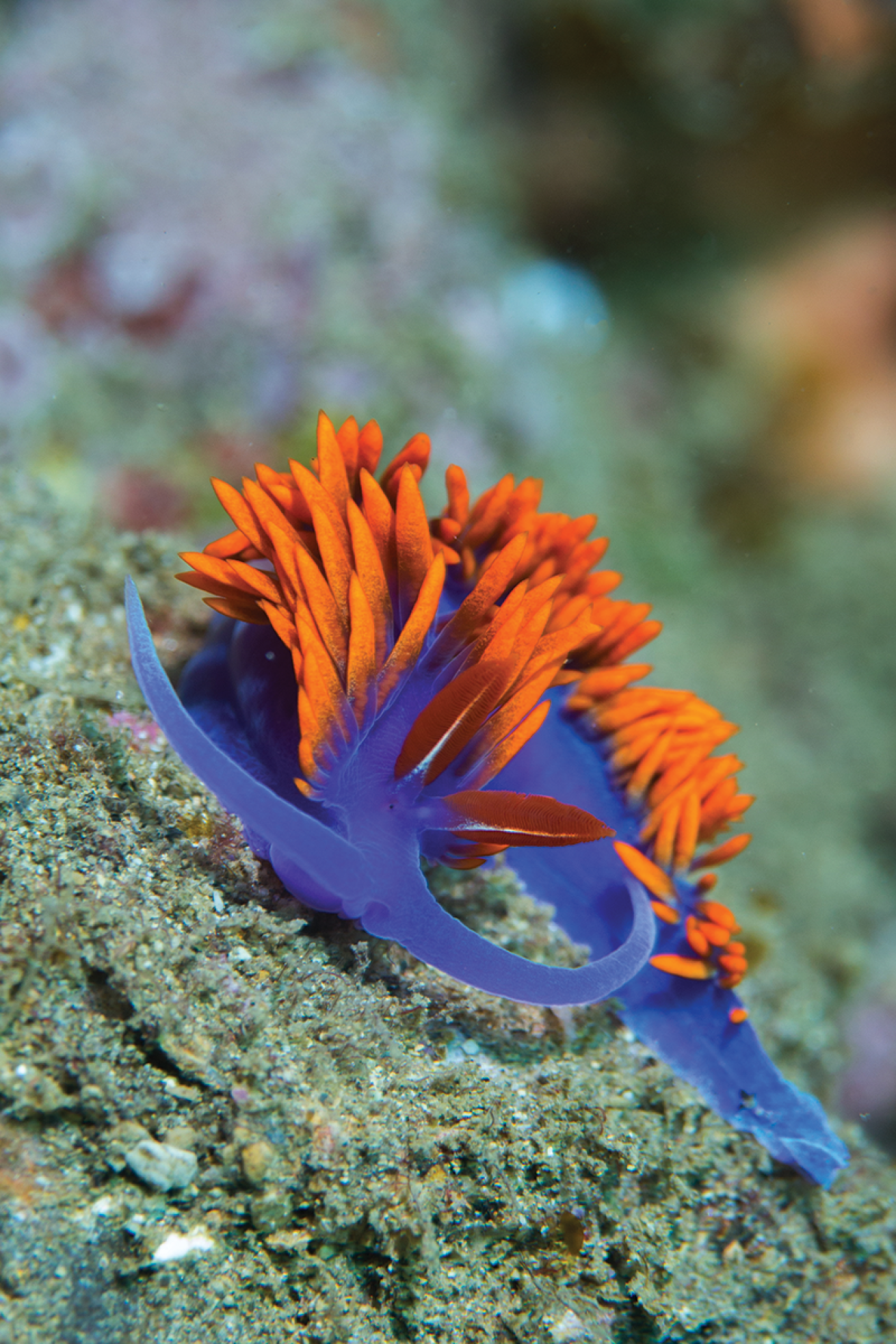
Michael LanghansSpanish shawl nudibranch
When we pulled out of the harbor aboard Spectre this morning, the light was setting a different mood. We churned south toward Anacapa under gray skies, the water a menacing dark-blue. The building winds eventually forced us to change course—toward Santa Cruz Island.
We arrive at our new destination and anchor at Smuggler’s Cove to dive a shallow, protected strip of reef. Spanish shawl nudis–a rare find on my home reefs of Monterey—are prolific here. Their indigo bodies and blaze-orange cerata keep tempo with the building swell. A particularly rough surge dislodges one slug. Its body contorts into a tight “U” shape before snapping back in the opposite direction. The peculiar swimming motion makes e giggle through my reg. The reef is alive with movement: California sheephead, giant kelpfish and señoritas zip by, and delicate orange and pink gorgonians fan out from the rocks. In the crevices, dozens of beady crustacean eyes and nervously twitching antennae stare out at me—lobsters! After about an hour the kelp leans over, dragged by the current. Time to head in.
Friday Afternoon
We jet up the coast to San Pedro Point—the destination for our final two dives. The sun finally peeks through the clouds and we are greeted by thick patches of kelp sprouting from enormous rock formations tapering down to the bottom at 35 feet. Ledges, holes and crevices make up the complexity of the landscape, and in each bend and plateau, new life awaits. Gargantuan scallops cover the algae-rich walls that shoot up toward the surface around me; giant purple sea hares scale the kelp. Despite the biodiversity, urchin barrens have started to take over. Silently cursing the spiny purple orbs for gobbling up so much of California’s kelp, I collect several to eat on the boat.
SPG needles dipping, we hustle out of the water for lunch and a dip in the hot tub. Brian is wide-eyed and grinning, describing his encounter with an octopus, but I’m too amped up on my own dive to be jealous. After a week of hardcore hiking, shuttling heavy gear and sleeping on the ground, the Spectre experience is a lavish luxury. We feast on brownie ice cream sundaes as the crew pulls anchor, starting back toward the mainland in the afternoon sun.
My heart longed for Anacapa, but it wasn’t in the cards. In an attempt to control the uncontrollable, I had called the charter, hopeful and naive, the previous morning. “Is there any way we can request to go to both islands?” I could hear the amusement on the other end of the line. The gist of the response being: We go where the ocean decides, to hell with your requests.
That’s how it goes out here on this wild coastline. There are no concessions, no visitor’s center, restaurants or souvenir stores here. Instead, unabashed pinnipeds play with your fins, sustenance comes in the form of scallops, urchins and rockfish, and iconic island foxes steal your food—and your heart. Despite the temperamental weather and constantly changing plans, these islands deliver the adventure of a lifetime. —Ariella Simke
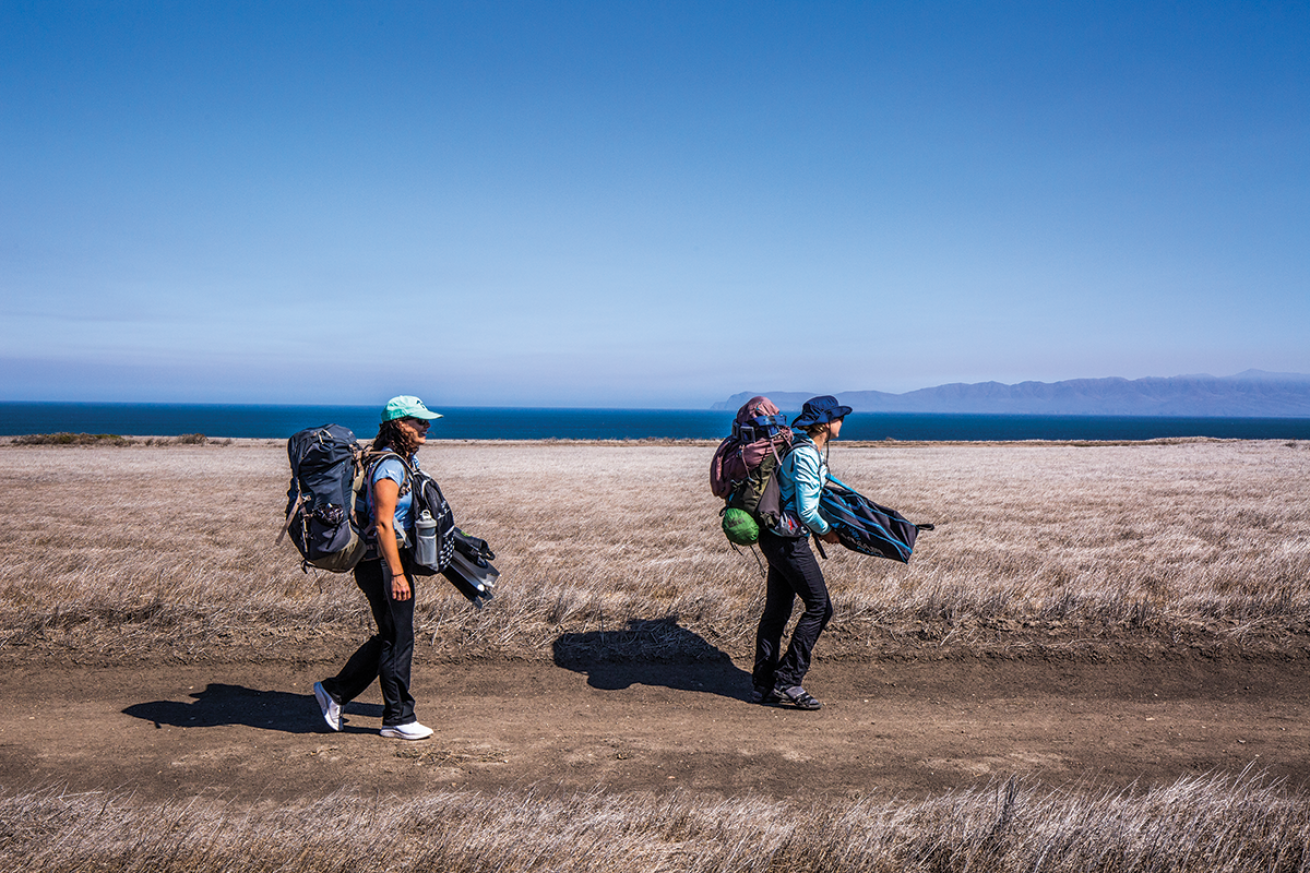
Michael LanghansAlexandra and Ariella hike with their dive gear to the Santa Rosa campground.

